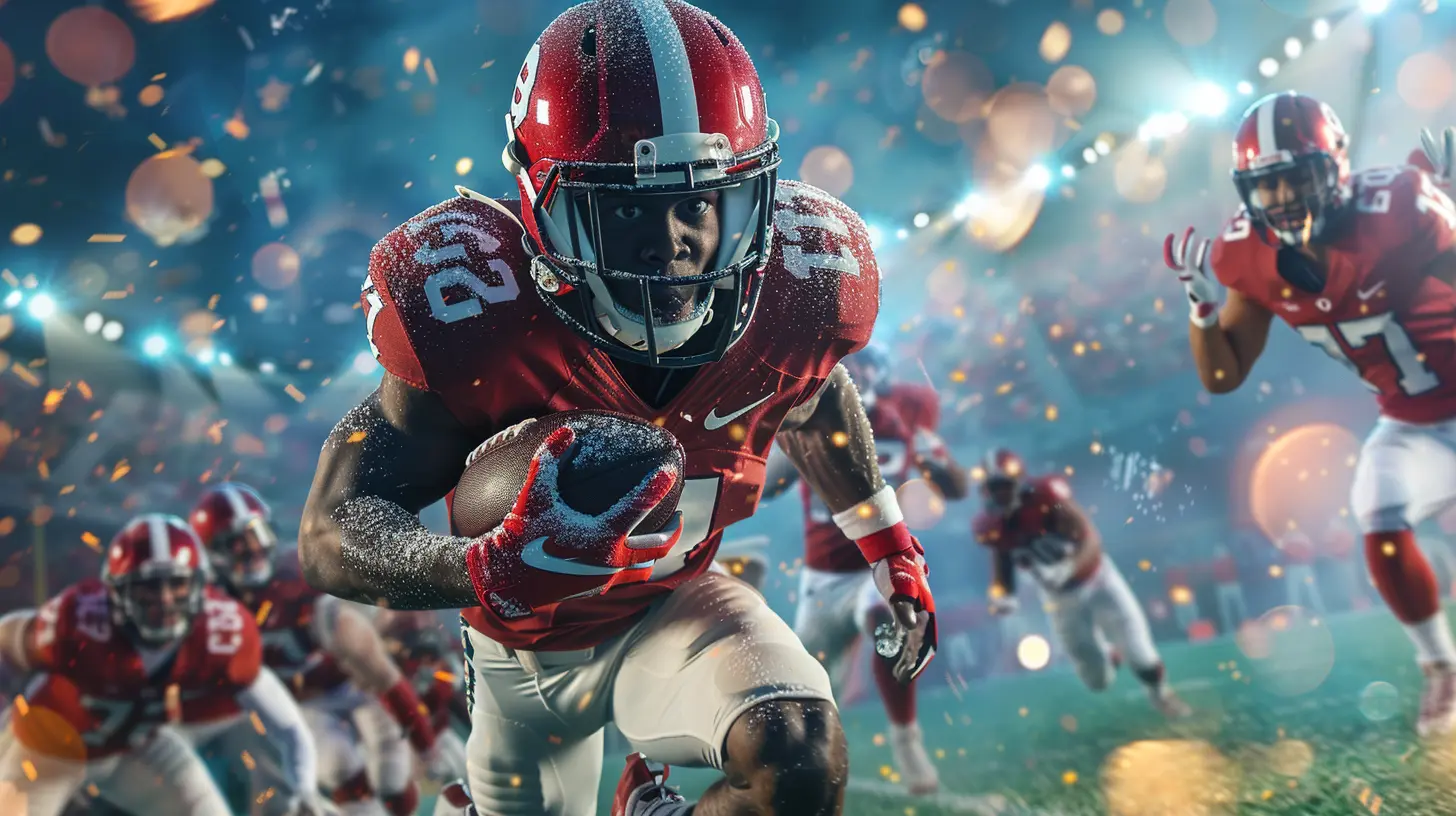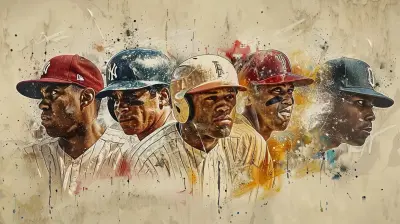The Evolution of Sports Marketing in the Age of Streaming
25 July 2025
Sports marketing has changed dramatically over the years. Remember the old days when TV commercials and stadium billboards were the kings of advertising? Well, those days are long gone. With the rise of streaming platforms, sports marketing is now a whole new game.
Fans are no longer just sitting in front of their TVs watching games. They're streaming live matches on their smartphones, engaging with athletes on social media, and following their favorite teams through personalized content. This shift has forced brands and sports organizations to rethink how they connect with audiences.
So, how has sports marketing evolved in the streaming era? Let’s break it down. 
The Digital Revolution: A Game-Changer for Sports Marketing
The traditional ways of marketing in sports—TV ads, magazines, and newspapers—are now playing second fiddle to digital platforms. Why? Because fans are consuming sports content in an entirely different way.Live sports streaming, social media, and on-demand content have changed the rules. Fans want real-time insights, behind-the-scenes footage, and direct engagement with their favorite athletes. If brands fail to adapt, they risk losing relevance in a highly competitive market.
This shift has led to some major changes in how sports marketing works today. 
The Rise of Streaming Platforms in Sports
Gone are the days when cable TV was the go-to for watching sports. Today, fans want flexibility. They want to watch their favorite games anytime, anywhere. Streaming platforms like:- ESPN+
- DAZN
- Amazon Prime Video
- Peacock
- YouTube TV
…have changed the way sports are consumed. These platforms provide live matches, exclusive behind-the-scenes content, and personalized recommendations based on viewing history.
For marketers, this means more targeted advertising opportunities. Instead of generic TV ads, brands can now deliver personalized ads based on user preferences, ensuring a higher engagement rate. 
Social Media: The Heartbeat of Modern Sports Marketing
Social media has become a powerhouse in sports marketing. Fans are no longer just passive viewers—they’re active participants. They tweet, post, react, and engage with content in real time.Why is social media crucial in sports marketing?
1. Direct Fan Engagement – Athletes and teams can connect with fans instantly via Twitter, Instagram, and TikTok.2. Viral Moments – A single highlight clip can go viral, generating millions of views overnight.
3. Influencer Marketing – Brands now collaborate with athletes who have huge social media followings.
4. Real-Time Updates – Live tweeting and Instagram stories keep fans in the loop, even if they’re not watching the game.
Social media has blurred the lines between athletes, teams, and fans, making engagement more personal and interactive. 
Personalized Content: The Future of Fan Engagement
Streaming platforms and social media have led to one major shift in sports marketing: personalization.Brands are no longer just advertising to a broad audience. They're tailoring content based on individual preferences. Ever noticed how your YouTube recommendations always include highlights from your favorite team? That’s personalization at work.
How does personalization impact sports marketing?
- Better Fan Experience – Fans feel more connected because they receive content that interests them.- Higher Engagement Rates – Personalized ads and content lead to more interactions and brand loyalty.
- Increased Revenue – Brands can sell products directly to fans based on their preferences.
From custom video highlights to AI-driven recommendations, personalization is shaping the future of sports marketing.
Sponsorships and Advertisements in the Streaming Era
Remember the good old days of big-budget TV commercials during halftime? While they still exist, brands are shifting towards digital sponsorships and creative advertising strategies.New-age sponsorship strategies include:
- In-Stream Ads – Short, targeted ads during live games on streaming platforms.- Branded Content – Behind-the-scenes videos featuring sponsors and athletes.
- Interactive Ads – Polls, quizzes, and interactive sponsorships during streams.
- Product Placements – Subtle brand integrations in sports documentaries.
Streaming has opened up a treasure trove of ad opportunities that traditional TV could never provide.
The Role of AI and Data in Sports Marketing
Data is the new MVP in sports marketing. AI-driven analytics help brands and teams track fan behavior, predict trends, and deliver more effective campaigns.How does AI impact sports marketing?
- Predictive Analytics – Brands can forecast fan behavior and buying habits.- Chatbots & Automation – AI-powered chatbots answer fan queries instantly.
- Enhanced Sponsorship ROI – Data helps brands measure the effectiveness of sponsorship deals.
With AI, marketers can make smarter, data-driven decisions to improve fan engagement and revenue generation.
Esports: The New Frontier in Sports Marketing
Esports is no longer a niche market. It’s a global phenomenon with millions of dedicated fans. Traditional sports brands have jumped on the esports bandwagon, realizing its potential for marketing.Why are brands investing in esports?
- Massive Viewership – Major esports events attract millions of live viewers.- Younger Demographics – Esports mainly appeals to Gen Z and Millennials.
- New Sponsorship Opportunities – Digital-first branding strategies thrive in esports.
From Red Bull partnering with esports teams to Nike sponsoring professional gamers, the industry is booming.
The Future of Sports Marketing in the Streaming Era
The streaming era has revolutionized the way fans consume sports, and sports marketing has had to evolve alongside it. Looking ahead, we can expect:- More AI-driven personalized content
- Even deeper social media integration with live streaming
- Augmented Reality (AR) and Virtual Reality (VR) experiences
- Advanced data-driven sponsorship models
One thing is for sure—brands that fail to embrace these changes will struggle to stay relevant.
Final Thoughts
Sports marketing has come a long way, and its evolution is far from over. The shift from traditional media to streaming platforms has unlocked new opportunities for fan engagement, personalized content, and digital sponsorships.The game has changed, and brands that adapt will score big. Streaming isn’t the future—it’s the present. And sports marketing is making plays like never before.
all images in this post were generated using AI tools
Category:
Sports MarketingAuthor:

Onyx Frye
Discussion
rate this article
1 comments
Oriana Warner
From VHS to streaming, sports marketing has hit a home run! Who knew all it took was a Wi-Fi connection and a love for nachos to score big?
August 15, 2025 at 3:54 AM

Onyx Frye
Absolutely! The shift to streaming has revolutionized sports marketing, making it more accessible and engaging for fans—nachos included!


